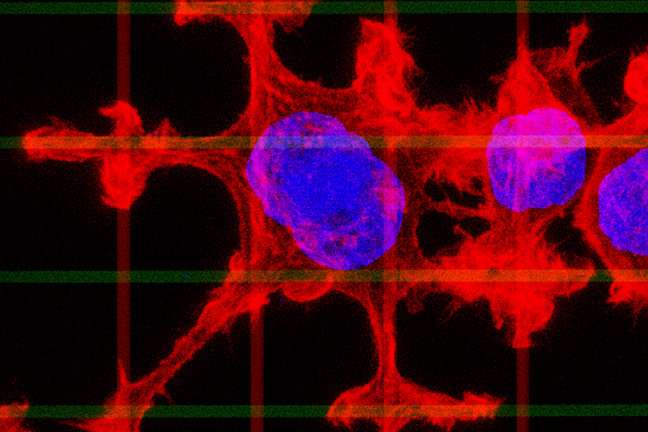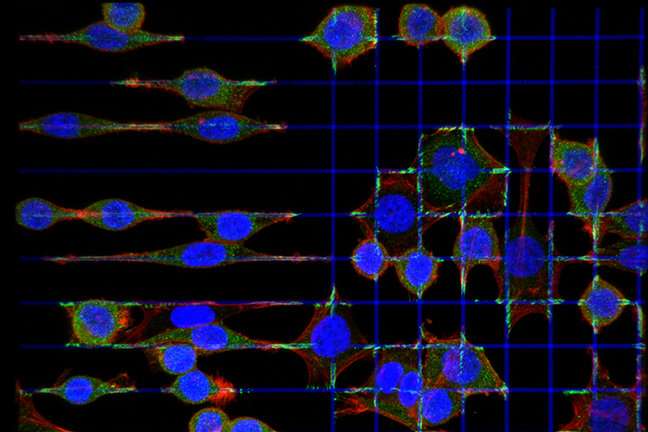Study on how to stop cancer cells from moving and spreading sheds new light with promising results.
Source: University of Minnesota Nov 26, 2018 7 years, 2 weeks, 17 hours, 55 minutes ago
A new study by University of Minnesota biomedical engineers shows how they stopped cancer cells from moving and spreading, even when the cells changed their movements. The discovery could have a major impact on millions of people undergoing therapies to prevent the spread of cancer within the body.
After targeting the "motors" that generate forces in cancer cells to move, the cancer cells switch to a dendritic or "flowing" response to follow pathways in tumors that drive cell migration and promote spreading of the cancer. Credit: Tabdanov/Provenzano, University of Minnesota
The research is published today in
Nature Communications, a leading research journal.
Researchers have known for years that tumors have patterns that are like little "highways" that cancer cells use to move within the tumors and ultimately toward blood vessels and adjacent tissue to invade the body. Patients who have high numbers of these patterns in their tumors have a lower chance of
surviving the cancer.
What the researchers haven't been able to figure out until now is how the cells recognize these patterns and move along them.
In this study, the University of Minnesota team examined in the lab how breast cancer cells moved and used medicines to try to stop the cells. When they stopped the mechanisms that serve as the motor of the cells, the cells surprisingly changed the way they moved to an oozing-like motion, almost like a blob.
"Cancer cells are very sneaky," said senior author Paolo Provenzano, a University of Minnesota biomedical engineering associate professor and a Masonic Cancer Center researcher. "We didn't expect the cells to change their movement. This forced us to change our tactics to target both kinds of movements simultaneously. It's almost like we destroyed their GPS so they couldn't find the highways. This stopped the cells in their tracks. The cells just sat there and didn't move."
Ninety percent of cancer deaths are due to the cancer spreading throughout the body. Putting the brakes on cancer cell movement would allow physicians the time to use other therapies to improve survival rates of patients.
The researchers studied the cells in the lab in two-dimensional, engineered microenvironments, that are almost like a microchip with cells. These microenvironments mimicked how the cells behave as they do in a tumor and allowed researchers to speed up their research.
Cancer cells sense and follow pathways in tumors to move throughout the body. In this image, cancer cells on the right are not directionally biased on grids that mimic fibrous networks, but become highly al
igned and migrate directionally on the left in response to patterns that mimic aligned fibers found in living organisms. Credit: Tabdanov/Provenzano, University of Minnesota
"By using these controlled network microenvironments, we were able to test hundreds of cell movement events in hours compared to one or two in the same time frame by imaging a tumor," said Erdem Tabdanov, a University of Minnesota biomedical engineering
postdoctoral researcher and first author of the study.
The next steps for the research team are to expand the types of cancers studied and begin animal trials. Within a few years, the researchers hope to move to clinical trials in humans. They will also study how the medicines interact and what side effects may result.
"Ultimately, we'd like to find ways to suppress cancer cell movement while enhancing immune cell movement to fight the cancer." Provenzano said.
Reference: Erdem D. Tabdanov et al, Bimodal sensing of guidance cues in mechanically distinct microenvironments, Nature Communications (2018). DOI: 10.1038/s41467-018-07290-y

